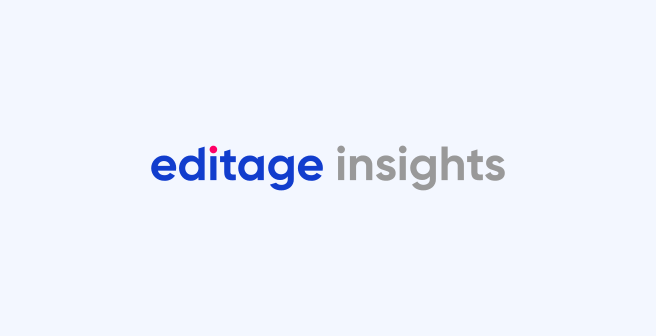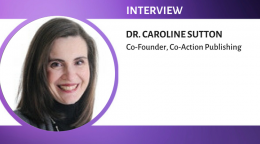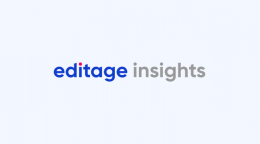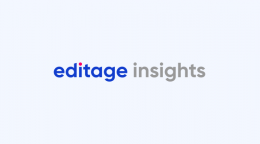Benefits of publishing your work open access: Debunking myths

[This post was created for the Wolters-Kluwer author newsletter Author Resource Review and has been reproduced with permission.]
As an author, are you interested in whether or not to publish your research in an open access (OA) journal? OA publishing has come under a lot of scrutiny recently in the scholarly community with the ever-increasing growth in the number of predatory publishers (Beall’s List1 now includes 1,085 predatory publishers) and the concern over the quality of OA publications. Like most things in life, OA has its supporters and detractors. This article will debunk some of the myths surrounding OA and provide you with some benefits of publishing your research under an OA model.
But first, below are some tips to avoid being caught by predatory publishers claiming to publish OA articles.
Before choosing a journal to submit your work to, check to see if your journal of choice is included in the Directory of Open Access Journals (DOAJ), which is a community-curated online directory that indexes and provides access to high-quality, OA, peer-reviewed journals. In addition, there are a number of other important questions authors need to consider before submitting a manuscript. Here is a brief list of helpful questions to get you started:2-4
First, if the journal is a reputable journal publishing OA articles, the answers to these four questions should be “yes”:
- Is the journal Publisher a member of the Committee on Publication Ethics?
- Is the journal indexed by genuine indexes such as Ulrich’s Web, DOAJ, Scopus or Web of Science? (Note: Newly launched journals by reputable publishers will take time to get indexed in a scholarly database or directory, so be sure to check for additional red flags should this be a concern.)
- Is there a statement regarding the peer-review process or that the journal charges an article-processing charge (APC) for OA manuscripts?
- Does the journal offer value-added services such as reference linking or the proper archiving of previously published papers?
Next, ask the following six questions. An answer of “yes” to any of these questions should be enough of red flag to stop and raise concerns about the journal and its practices:
- Are there grammatical errors on the journal’s website and emails?
- Is the Editorial Board either non-existent, or is the same person named as editor of multiple journals published by the same publisher?
- Is the journal name very broad to attract more content?
- Is the “home office” located in a small, old storefront or listed as a post office number? Or does the name of the journal not reflect its origin (or does not reveal its location)?
- Are any of the names/institutions of the journal board members fictitious, or could they be on the board without their permission?
- Does the publishing opportunity sound too good to be true? For example, is immediate publication promised along with a very high acceptance rate being evident? (If so, it probably is too good to be true!)
Listed below are the benefits offered by Wolters Kluwer Open Health (WKOH), irrespective of whether it is either a gold or hybrid model of OA. However, most or all of these benefits are offered by journals that have adopted the gold or hybrid model of OA.5-6
1. Widest possible dissemination of your work
OA is the free, immediate, online access for any user, web‐wide, to digital scientific and scholarly material, primarily research articles published in peer‐reviewed journals. OA content is free permanently on all online locations and allows users to link, read, download, store, use and data-mine the digital content of that article without copyright or licensing restrictions. This means that researchers all over the world will be able to read your research without having to have a paid subscription to the journal. The OA licenses (the Creative Commons licenses7) set some restrictions on commercial and derivative uses of OA content. There is evidence to suggest that OA papers receive more citations than non-OA papers8.
2. High standard of production and rigorous peer review
You will receive the same level of editorial services and support. For instance, when publishing with Wolters Kulwer, the peer review and production processes are the same for the OA articles in the gold/hybrid model as they are for those articles published and accessible by subscription or pay-per-view papers published by Wolters Kluwer. All articles will undergo the journal’s standard independent peer review process. For hybrid journals, authors are given the option to make an article OA only after the article has been returned for revisions, or accepted.
3. You retain copyright, licensed under Creative Commons
Authors retain copyright of their work and publish their article using a Creative Commons license. There are several Creative Commons licenses, but each allows authors and readers download, share and reuse from the time of publication. Some licenses limit reuse to nothing commercial or without derivatives and other licenses are less restrictive. Most articles require an APC for the costs associated with submission, peer review, production, publication and promotion, which can be paid by the author, funder, institution, or sponsor upon acceptance.
4. Compliance with OA mandates
As is the case with many journals, Wolters Kluwer’s OA program (both gold and hybrid) provides authors with a means to comply with OA mandates and meet applicable license requirements. OA articles will be made available under the terms of the Creative Commons license and the final version of the article will be deposited to PubMed Central on publication. All authors who choose to publish their paper OA will have their final published article deposited into PubMed Central on their behalf by Wolters Kluwer.
5. Promotion and publicity of quality research
WKOH offers the global distribution of freely available, quality OA research on their innovative journals platform. Articles published in WKOH journals are promoted through free email newsletters, content alerts, homepage and subject page features, and special promotions.
6. Rapid publication
One of the features many OA journals offer is rapid publication. Wolters Kluwer's suggested turnaround time goals for OA journals is 21 days from submission to first decision and 35 business days from acceptance to publication.
Considering all the benefits mentioned above, OA is a great way of publishing your research, giving you and your work the most exposure and visibility. Below is a list of the most important websites should you want to learn more about what OA can offer you:
Additional Resources
- Creative Commons:- a nonprofit organization that enables the sharing and use of creativity and knowledge through free legal tools
- Directory of OA Repositories: an authoritative directory of academic OA repositories
- Directory of Open Access Journals: an online directory that indexes and provides access to high quality, OA, peer-reviewed journals
- Horizon 2020: the EU framework program for research and innovation
- National Institute of Health (NIH) Policy Details: frequently asked questions about the NIH Public Access Policy
- Open Access Directory: a compendium of simple factual lists about OA to science and scholarship, maintained by the OA community at large
- OSTP Memo: the U.S. government plans to make the results of federally funded research freely available to the public—generally within one year of publication
- Research Councils UK (RCUK): review of the implementation of RCUK Policy on OA (PDF)
- Scholarly Publishing and Academic Resources Coalition (SPARC):an international alliance of academic and research libraries working to create a more open system of scholarly communication
- SHERPA/JULIET: research funders’ OA policies
- The Registry of Open Access Repository Mandates and Policies (ROARMAP): a searchable international registry charting the growth of OA mandates and policies adopted by universities, research institutions and research funders
References
- Beall’s list of Predatory Publishers: https://scholarlyoa.com/publishers/, updated on 24th August 2016, accessed on 25th August 2016
- Beall, J. (2012). Criteria for determining predatory open access publishers (2nd ed.). Retrieved from http://scholarlyoa.com/2012/11/30/criteria-for-determiningpredatory- open-access-publishers-2nd-edition/
- Masten YB, Ashcraft AS. The Dark Side of Dissemination: Traditional and Open Access Versus Predatory Journals. Nursing Education Perspectives. 2016; 37(5): 275-277.
- The University of Queensland, UQ Library. Getting Published: Journal Articles: Get started: http://guides.library.uq.edu.au/getting-published accessed 2 September 2016.
- Wolters Kluwer Open Health FAQs: http://www.wkopenhealth.com/openaccessfaq.php accessed 25th August 2016.
- Bindon SL. Open Access: Opportunity and Awareness. Journal for Nurses in Professional Development, July/Aug issue, pp189-190 (2015).
- Creative Commons Licensing Types: https://creativecommons.org/share-your-work/licensing-types-examples/, accessed 25th August 2016
- Fang Z, Wang X, Liu C, Mao W. The open access advantage considering citation, article usage and social media attention. Scientometrics, 103(2), pp 555–564 (2015).
You might also be interested in reading: Why should researchers choose open access?
Comments
You're looking to give wings to your academic career and publication journey. We like that!
Why don't we give you complete access! Create a free account and get unlimited access to all resources & a vibrant researcher community.

Subscribe to Journal Selection
After writing a research paper, the next step is to find the right journal to publish it. Subscribe and get curated content to find the perfect journal that will give impetus to your research paper and your career.













